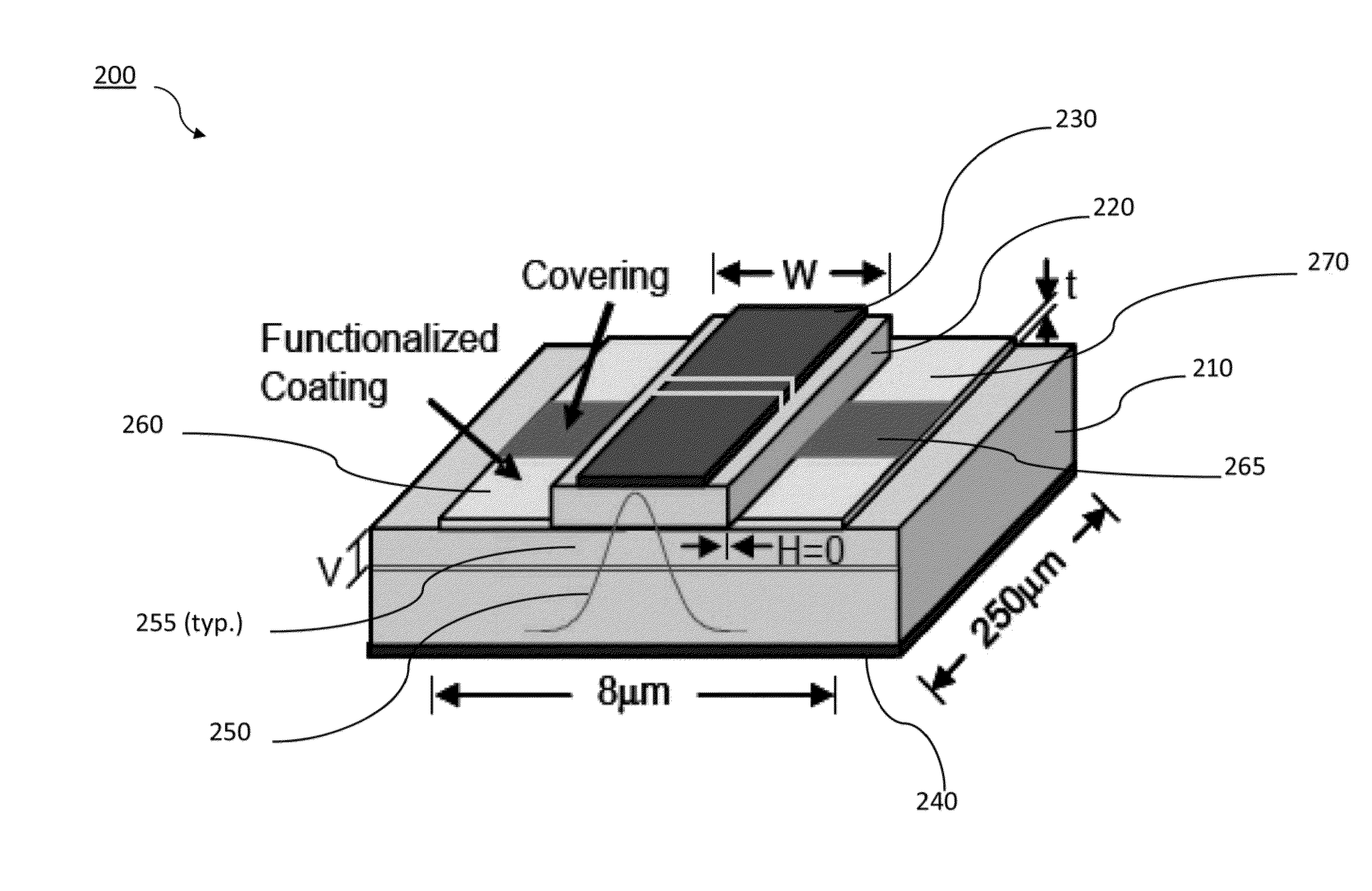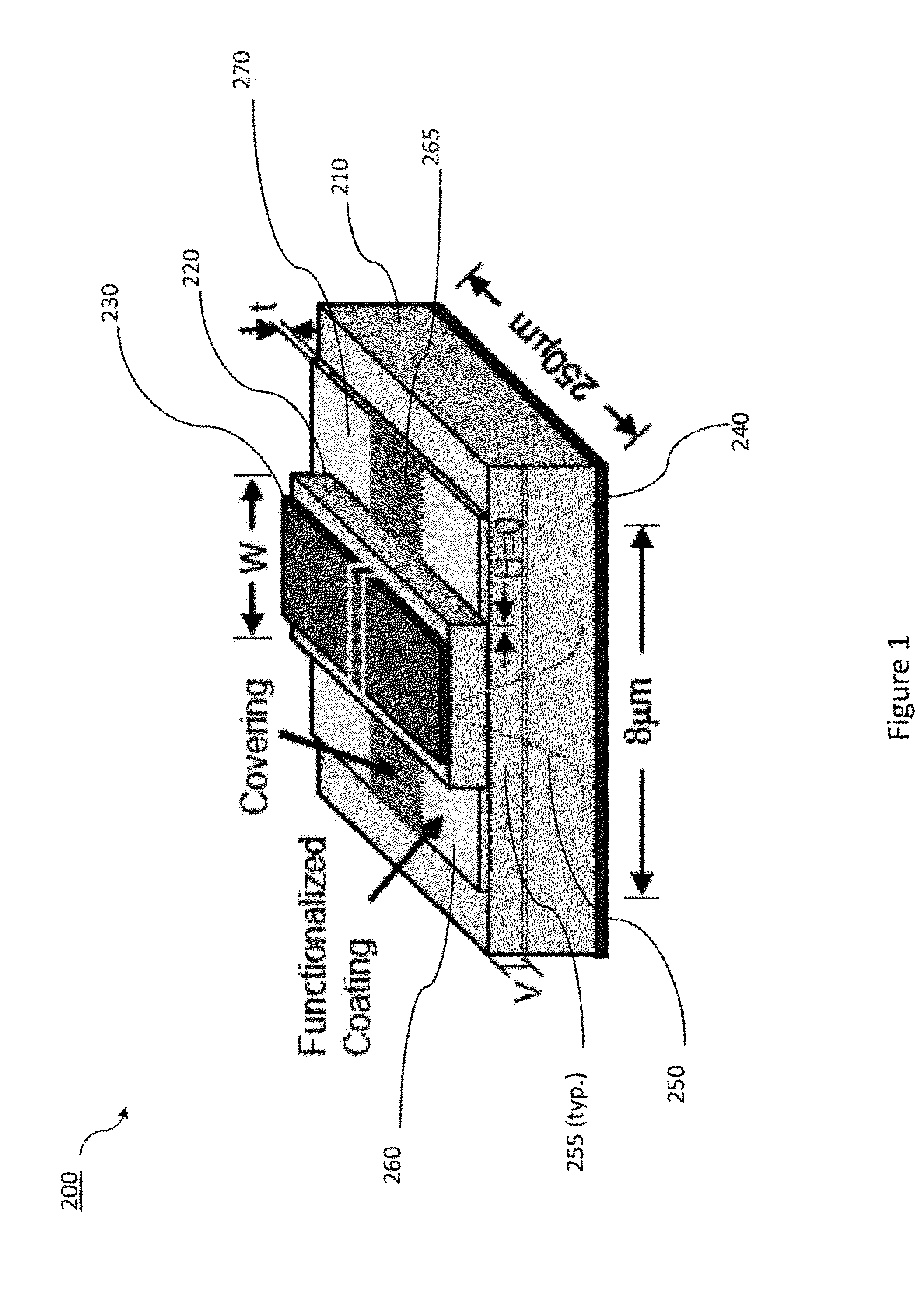Resonant Optical Transducers for In-Situ Gas Detection
a technology of in-situ gas detection and optical transducer, which is applied in the shape and construction of optical resonators, semiconductor lasers, instruments, etc., can solve the problems of poor reliability, limited by the recovery time of pl and a chronic pl quench, and limit the lifetime and complexity of readout syst, so as to enhance the sensitivity of the device, the effect of high quality factor and high sensitivity
- Summary
- Abstract
- Description
- Claims
- Application Information
AI Technical Summary
Benefits of technology
Problems solved by technology
Method used
Image
Examples
Embodiment Construction
[0032]One embodiment of a present ROT is shown in FIG. 1, the basic structure of which is a semiconductor-based edge-emitting laser, EEL 200. The basic EEL, which is well known in the art, is augmented with a state-selective thin-film functionalized adsorption layer, thereby resulting in the trace-gas sensor. The EEL is comprised of a substrate, 210, upper (gain) guiding ridge layer 220, and top and bottom contacts, 230 and 240, respectively, for biasing. In some cases, the top contact can be partitioned, so that different regions within the laser can possess differing amounts of optical gain or loss. The basic guided-wave optical mode, 250, is confined vertically by the basic waveguide structure and laterally, via gain guiding. The EEL optical cavity consists of a pair of Fresnel reflective air / semiconductor interfaces, 255, formed at the front and rear substrate facets, respectively, normal to the optical axis. The semiconductor materials and structure of the basic laser are well ...
PUM
 Login to View More
Login to View More Abstract
Description
Claims
Application Information
 Login to View More
Login to View More - R&D
- Intellectual Property
- Life Sciences
- Materials
- Tech Scout
- Unparalleled Data Quality
- Higher Quality Content
- 60% Fewer Hallucinations
Browse by: Latest US Patents, China's latest patents, Technical Efficacy Thesaurus, Application Domain, Technology Topic, Popular Technical Reports.
© 2025 PatSnap. All rights reserved.Legal|Privacy policy|Modern Slavery Act Transparency Statement|Sitemap|About US| Contact US: help@patsnap.com



